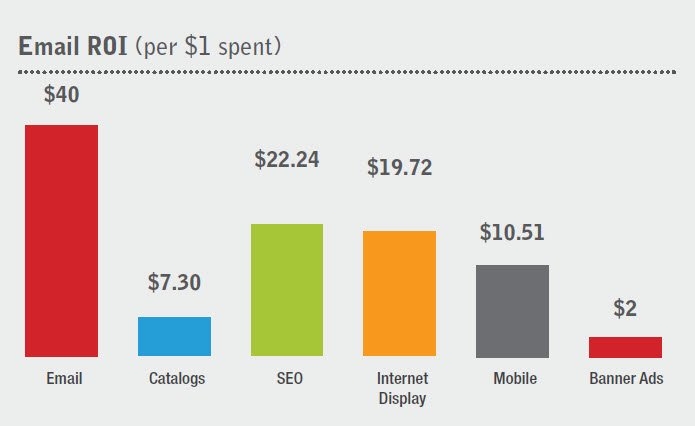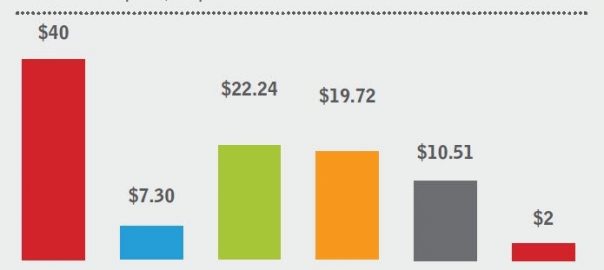This isn’t the first post on these pages to cover digital marketing tips to boost your business. And it won’t be the last. After teaching digital marketing for over 5 years, I can tell you that each time I teach the class I have to almost build the course readings list from scratch because digital marketing changes constantly, sometimes in very dramatic ways that make you rethink your entire digital marketing strategy. Today is crafted as an update to include some of the old standards that always worked in digital marketing as well as some new tactics you can add to your arsenal as you try to boost your business.

Building — or maintaining — a business in the current climate isn’t easy. The COVID-19 pandemic devastated many businesses, as they closed due to sequential lockdowns. Some of these businesses will never open their doors again. The worldwide economic slowdown meant that even businesses allowed to remain open, suffered from declining sales as their customers struggled to pay for the bare essentials.
But where there are challenges there are also opportunities. Our hyper-connected world means you have opportunities to boost your business, by changing your business model and adapting to the way today’s consumers’ shop. So, for digital marketing tips and tricks, read on.
5 Marketing tips to boost your business
1. Marketing plan
Before you pour money and energy into marketing strategies that may or may not work, you need to savagely update your existing marketing plan or, if you never build one in the first place, now is the time to craft a detailed marketing plan to drive your business forward.
A marketing plan involves research; evaluate past performance, conduct a thorough review of your external environment, then use insights gleaned from this research to build a strategy designed to meet your goals.
You’ll find numerous templates and outlines online to guide you as you work to develop your marketing plan. Be sure to include a thorough review of the following:
- Your competition highlighting your competitive advantage and how likely it is you can maintain that competitive advantage and the long run. Try to anticipate how your competitors will respond to your plan once implemented as well as predict changes your competitors might make in their own strategy based on your review of their business model.
- The economy in your country and region or, if you’re an international company, the countries where you sell your product. The economy acts as a guide to customer spending as it highlights elements of the economy such as employment rates and consumer confidence that cause consumers to spend more or less freely.
- Legal changes, as well as administrative rule changes, can impact your business operation, especially if you’re in a technological field or you use technology in your business. For instance, when social media platforms change their rules or elements of their platforms, these changes will impact the way you use social media to promote your business. Stay ahead of proposed legal challenges by building in contingencies in case these rules are enacted as part of your marketing plan.
- Consumers are a fickle bunch. Something that was very popular one year may be anathema the next year. Research consumer trends thoroughly to anticipate how changes in norms, values, attitudes, and beliefs may impact demand for your product in the coming year.
- It seems like technology changes every Monday, Wednesday, Friday. Some new technologies you’ll see include expanded use of AI, as well as other technologies like blockchain. Failure to adapt to technological change means you are left behind and it puts your business at a serious competitive disadvantage when others in your industry adopt new technologies. For instance, in the current pandemic, with businesses shuttered across the globe, businesses who quickly moved their operation online survived while those who could not make the leap did not. Facing shortages of critical products, other businesses adapted by changing their product offerings. For instance, breweries switched to making hand sanitizers, which faced serious shortages. Other businesses transformed to produce PPE. While these adaptations don’t reflect the adoption of technology, they reflect the adoption of new processes, such as those offered in lean and agile methods.
It’s not enough to predict changes based on your own biases and understanding of the marketplace. You must thoroughly research each of these factors, then use critical thinking as well as bringing in employees, such as your salesforce, as a sounding board to build a marketing plan that works to boost your business.
2. Social media
Maybe you love it, maybe you loathe it, but it’s a brilliant tool for marketing businesses of all sizes. Not only is social media affordable and highly targeted, but it also doesn’t take weeks or months to mount a successful campaign. That’s why social media and other digital strategies should play a major role in your marketing plan. In fact, after years of double-digit increases, 62% of advertising budgets are now spent on digital versus traditional advertising channels; a figure anticipated to increase to 66% by 2023.
Building your business’s presence online boosts awareness, and ultimately attracts new customers to your business. By engaging users on social platforms, you not only promote your brand but achieve amplification as your message moves from engaged users to their networks. The key to success in social media, as with all digital marketing strategies, is creating valuable content on a consistent basis. Check out the image below for recommended amounts of content for each social platform.
Crafting posts that resonate with your target audience is the name of the game in social media and boosts your business by driving traffic to your website. Social media is not informational by nature. Instead, be yourself on social platforms. Don’t be afraid to share something about you as a person or be funny or own your missteps. Just ensure that the content you post isn’t misconstrued by anyone or appears insulting to any part of your target market.
It’s not only important to post content on your social platforms frequently but to use the social platforms as a listening tool. Obviously listening to your customers and responding to them is key to improving engagement. Listening for mentions of your brand or those of competitors also provides benefits by letting you know what prospective buyers think and feel about your brand. The most sophisticated use of listening on social platforms involves using comments as a way to uncover unmet needs. This critical information allows you to create new products or build a new and improved version of your existing product to meet these needs.
Due to the demands required for posting content on your social platforms frequently, many businesses use automation tools that allowed them to craft an entire week’s worth of posts in an afternoon. Many of these automation tools also provide key metrics that help you improve your performance.
3. Email marketing
Email marketing may sound a little outdated, but the effectiveness of email marketing surpasses most other marketing techniques, as you can see in the graphic below.

Image courtesy of Data Mentors
Email marketing is a two-pronged strategy where you must first develop a subscriber list (most Western countries now disallow buying, renting, or sharing lists of emails) then sending valuable emails to a segmented list to boost your business. This means your emails target specific subscribers with communication they’ll find valuable.
Whether you’re looking to promote a new product or service, or you’re running a competition, or even if you’re creating useful content for your customers, an email campaign helps you reach your goals. The key to email campaigns is finding the sweet spot – you want to send messages to your customers frequently enough so they’re aware of your business and your promotions but not so much that they feel your messages are a nuisance and unsubscribe.
4. Create assets
Building a landing page Is a key element of your digital marketing strategy. A landing page contains a strong headline, a content body that motivates visitors to make a purchase, and a CTA (call to action) button that makes it easy for them to complete the purchase. Once you have a landing page, this forms the target for your social media and other forms of digital advertising. You can also use your landing page as your content posts to various social platforms and in email broadcasts.
Think of landing pages as your store’s showroom to highlight products and promotions offered by your business. For businesses that aren’t e-commerce focused, businesses use landing pages for other conversion types, such as hosting subscription forms or encouraging visitors to create a login for your site.
Creating engaging and enticing content for your landing page allows you to sell yourself online, which is vitally important to your marketing plan. Options to spice up your landing pages include developing business video samples (in which case, you must ensure you’re using the most recent video production tips), crafting GIFs, or embedding an interesting infographic. Regardless of your choice, a landing page is a key element of success for any marketing plan.
5. Testimonials
Never underestimate the power of recommendations to boost your business. Reviews and testimonials from satisfied clients act to support the quality and suitability of your products to prospective buyers. Products with positive reviews outperform products lacking these reviews. In fact, there’s a strong correlation between the number of positive reviews and sales.
If you want reviews to promote future sales, it’s important that the reviews be unbiased and real. Don’t be tempted to take shortcuts like using friends, family, or employees to write fake reviews. These are found out over time and damage your reputation. Instead, invite satisfied customers to write reviews by sending an email or including a personalized note in the shipping container. You might even try hosting contests where buyers who write reviews have a chance to win additional products.
Digital & Social Articles on Business 2 Community
(52)






